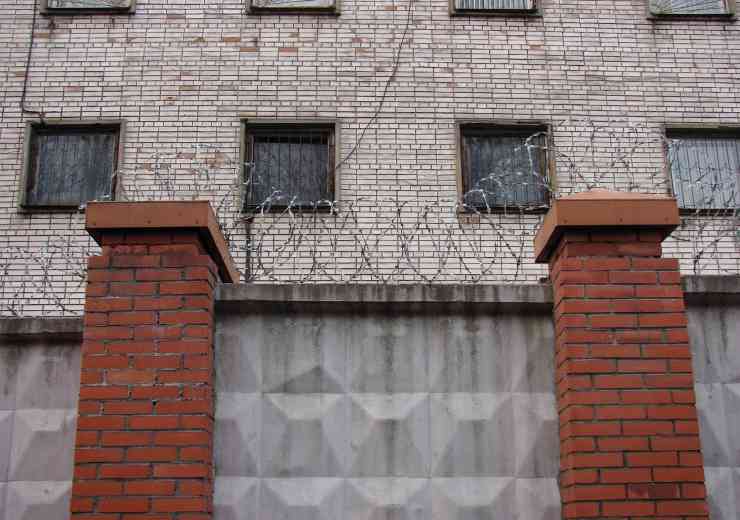
Ideology, extremism, radicalisation
The Radical Right and Covid-19
Radical-right groups across the globe were largely indifferent to Covid-19. Their responses are probably well-known to readers in Europe and North America, but given that these groups are so widespread today – after 9/11 they increasingly moved into the mainstream – their response has been highly fragmented globally. Today, two of the five biggest democracies have a radical-right leader (Brazil and India); the U.S was under Trump only months ago, two EU member states effectively have radical-right governments (Hungary and Poland), and radical-right parties are part of government coalitions in several other countries (such as Switzerland, Bulgaria, and Estonia). Given that the radical-right is a heterogeneous political phenomenon, what draws together such a group, such as the Hungarian Civic Alliance (spearheaded by Victor Orbán) or Modi’s BJP in India? For most scholars, the tie that binds is their core ideology, above all nativism, populism, and authoritarianism. Accordingly, the diverse parties making up the constellation of global radical-right actors do not have a consistent approach to the pandemic.
Yet radical-right groups were quick to find a target to blame for the pandemic in its early stage. Here was another opportunity to rail against immigrants and ethnic minorities. Their discourses were often charged with racist undertones. In Europe, for instance, Muslims were particularly targeted, while in the United States an anti-Chinese and more general anti-Asian sentiment was highlighted. Sadly but unsurprisingly, antisemitic narratives were not uncommon either. More broadly, in Europe, the pandemic offers a chance to bash the EU and globalisation as well. Although parties in a number took this position, ‘they did not use the nativist discourse’ according to Wondreys and Mudde. Many radical-right groups welcomed the idea of border closures and lockdown measures as these, in Klein’s assessment, ‘fit well with the authoritarian tendency of such groups, who often express praise for strong leaders who can ensure socio-political isolation for the purposes of reducing external threats to their totalitarian power’.
It must be underscored, however, that under radical-right groups in power authoritarian measures were not put forward consistently - probably not due to a lack of will, but because most groups did not have enough political power to do so. Orbán was the exception, confounding experts who are still coming to terms with a radical-right Hungary being part of the EU.
Undoubtedly, propaganda has always been a crucial aspect to these groups, and it is interesting to see how their strategy has recently changed in this regard. Here, the pandemic has clearly proven beneficial. People worldwide have spent many behind the screen, while online gaming – which is fertile ground for recruiters – has reached an all-time peak. The prevalence of online extremist channels facilitates the connection of isolated users and the development of closed ‘echo chambers’ of like-minded people in which extremist beliefs can be further reinforced and amplified. Misinformation is the order of the day on many popular sites. According to Eviane Leidig, for instance, an expert on the Indian far-right, this phenomenon seems to be originating on newer platforms like TikTok, which started becoming popular with the radical-right in recent years.
Contrary to the expectations of most political and media commentators, moreover, propaganda efforts have also translated into offline activity. The capacity to mobilise sympathisers during the pandemic and associated lockdowns, when the right to public assembly was severely restricted or forbidden, was scarcely disrupted. This has allowed radical-right groups to present themselves as embedded to communities, acting as defenders of individual freedoms and the national economy. This is true for two far-right groups that have not yet fully made the leap into national politics, Hogar Social in Spain and CasaPound in Italy. Both were physically active during the initial months after the pandemic was declared, wandering around low-income neighbourhoods and handing out food – but to nationals only. New groups also emerged, like Orange Vests in Italy, modelled after the recent protest group in France, the Yellow Vests. Both online and offline, then, radical-right groups been highly visible, appearing to offer a radical solution to the ‘injustices’ in their national polities.
These different promotional campaigns recently put in motion, furthermore, go hand-in-hand with conspiracy theories, which are also becoming noticeably mainstream in various countries. As the leading discourse analyst Ruth Wodak points out, the radical-right has a ‘penchant for conspiracies, scapegoats, and the politics of fear’. The question they try to answer is who is ‘behind all of this’, and there are a range of responses. In this area, it is important to underscore that there is overlap between the disparate radical right, the Anti-Vax movement, QAnon, and other conspiracists. Familiar arguments include that Covid is a plot to decimate the world, 5G radiation is causing Covid, and that Covid have been manufactured by China. Many other conspiracy theories perpetuate antisemitism, one the main tropes for the radical right globally, past and present.
Worryingly, some conspiracy theories pose a security threat offline since – as has been mentioned - are seemingly not put off by lockdown enforcement. For example, in the U.S there are many radical-right groups, albeit usually with smaller audiences, that have joined forces during the pandemic. They espouse similar anti-government views, and reproduce the consistent anti-establishing messaging.
Many take to the streets, sometimes attempting to blend in with massive anti-protest movements and clashing with the police. Even worse, however, is that many of the followers are actively and literally trying to spread the virus to ‘enemies’, to the extent of even committing hate crimes. This shows that, once again, in general, it is all too easy to find a connection between political extremism and conspiracy theories.
Yet it is still early to tell whether radical-right groups have managed to gain in popularity during the pandemic. But that also goes for traditional parties. Contrary to popular belief, radical-right groups have not uniformly shown their incompetence during this period - this is mainly centred on Modi, Bolsonaro and Trump’s poor pandemic response. Yet all the same, on a global scale the radical-right is utilising the present crisis to re-shape ideas about sovereignty, globalisation, democracy, equality, diversity, and even political legitimacy. This is closely linked to attempts at destabilising democracies by committing violent acts and spreading dystopian fantasies of collapse to push their interests – exemplified by 6 January in the US.
Likewise, misinformation and conspiracy theories, so frequent today, especially online, pose a huge challenge to big tech companies such as Facebook or Twitter. Many people, including U.S President Biden, called them out amid the rise of Covid cases due to the new contagious delta variant. Interestingly, their narratives are growing to such an extent that radical-right extremists can now pander to Covid deniers while simultaneously attracting those who believe the virus is real. While radical-right extremism was already increasing prior to the pandemic, it is likely to continue increasing in size and threat.
As sociologist Paolo Gerbaudo argues: “What may be in store is thus something much worse than the populist right of the 2010s: an extreme right using the whole arsenal of the red scare and right-wing authoritarianism to intimidate opponents and defend its interests from demands for meaningful economic redistribution. Though it has been confounded by this crisis, the populist right has not been suppressed. It is just mutating.”
Written by Tomás Francisco Martínez, Marketing and Events Intern at the Centre for Analysis of the Far Right.












